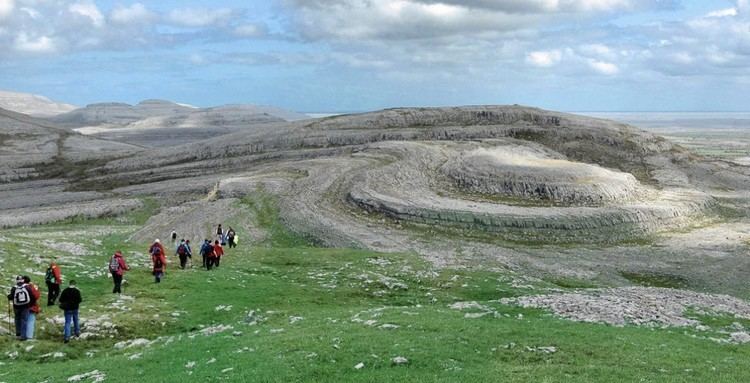Time zone WET (UTC+0) Elevation 30 m Local time Monday 3:33 PM | Irish Grid Reference R285887 Population 689 (2011) | |
 | ||
Weather 7°C, Wind W at 34 km/h, 77% Humidity | ||
2014 beard competition corofin county clare ireland
Corofin (Irish: Cora Finne or Coradh Finne) is a village on the River Fergus in northern County Clare in Ireland and a Catholic parish by the same name.
Contents
- 2014 beard competition corofin county clare ireland
- Map of Corofin Co Clare Ireland
- Name
- Location
- Attractions
- Town twinning
- Notable people
- References
Map of Corofin, Co. Clare, Ireland
In 2011, the village had 689 inhabitants, up from 485 in 2006.
Name
The name Corofin means "the white or foam-flecked ford" from the Irish: Finn Coradh, the earliest form of the name to be found in the literature: "fearann re hucht Finn Coradh".-[Ó hUidhrín, 15c. Topographical Poem]
A different translation is "Finne's weir".
The town is sometimes spelled "Corrofin". Corofin also styles itself as "The Gateway to the Burren" or "The Angler's Paradise".
Location
The village is 12 km (7.5 mi) north of the county town of Ennis, at the crossroads of the R470 and R476 regional roads. It is on the southern edge of the upland limestone region of The Burren. Corofin is in the civil parish of Kilnaboy in the Barony of Inchiquin.
It lies in the Kilnaboy parish of the Roman Catholic Diocese of Killaloe. The parish has three churches, St Brigid's in Corofin, St Joseph's in Kilnaboy and St Mary's in Rath.
Corofin is the birthplace of painter Frederick William Burton.
Attractions
Corofin is the site of the Clare Heritage and Genealogical Research Centre. The Cross Inneenboy has been moved here.
The Centre is located in the former Church of Ireland, St. Catherine's Church, built between 1715 and 1720 by Catherine Kneightly. It was renovated c. 1820 and by 1829 the steeple had been added.
Inchiquin Castle is located on the north side of Lake Inchiquin (in the parish of Kilnaboy). It was possibly built by Teige-an-Chomhaid O'Brien (d. 1466). In 1542, it belonged to Turlough, son of Murrough, first Baron of Inchiquin. Murrough O'Brien, the fourth baron, was in possession in 1580. His descendants, the Marquesses of Thomond, derived their title of Earl of Inchiquin from this estate. During the Nine Years' War, Hugh Roe O'Donnell raided Clare and Inchiquin Castle was attacked by one of his lieutenants, Maguire of Fermanagh. During the Confederate Wars Christopher O'Brien, Murrough the Burner's brother, lived here. Murrough's son, Colonel John O'Brien, abandoned Inchiquin towards the end of the 17th century. By then it had deteriorated into a ruin. Today the castle remains a ruin surrounded by pastures. Part of the older castle tower is still extant as is a good portion of the later 17th-century banquet hall.
